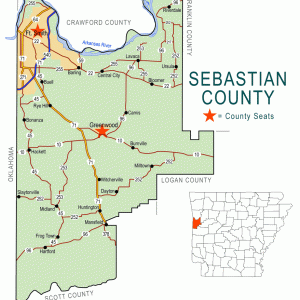calsfoundation@cals.org
Central City (Sebastian County)
| Latitude and Longitude: | 35º19’09″N 094º15’08″W |
| Elevation: | 440 feet |
| Area: | 2.22 square miles (2020 Census) |
| Population: | 461 (2020 Census) |
| Incorporation Date: | January 24, 1974 |
Historical Population as per the U.S. Census:
|
1810 |
1820 |
1830 |
1840 |
1850 |
1860 |
1870 |
1880 |
1890 |
1900 |
|
– |
– |
– |
– |
– |
– |
– |
– |
– |
– |
|
1910 |
1920 |
1930 |
1940 |
1950 |
1960 |
1970 |
1980 |
1990 |
2000 |
|
– |
– |
– |
– |
– |
– |
– |
339 |
419 |
531 |
|
2010 |
2020 |
|
|
|
|
|
|
|
|
|
502 |
461 |
|
|
|
|
|
|
|
Located at the crossroads of Arkansas Highways 22 and 255 in Sebastian County, Central City is a suburb of nearby Fort Smith (Sebastian County), the second-largest city in Arkansas. The community borders the city of Lavaca (Sebastian County) to its east. Central City is bordered to its south by Fort Chaffee.
In an effort to connect Fort Gibson with the early settlement of Fort Smith (on the edge of Indian Territory), the U.S. Congress made provisions to build a military road. This transportation route followed former Native American trails almost paralleling the Arkansas River and went directly through what became Central City. All of the “Five Civilized Tribes” (Seminole, Muscogee Creek, Choctaw, Cherokee, and Chickasaw) traveled through the area in the 1830s in what would become known as the Trail of Tears.
Central City was known as the Montrose Community in its earliest recorded history. In 1876, Bernard S. Sybert was made its first postmaster. The Little Rock and Fort Smith Railroad Company routed the train through the area and constructed a train depot in the community during the 1870s.
In its early years until the early 1900s, the community boasted a cotton gin, sawmill, and grist mill. Business owner Oliver H. Phillips advertised his business dealings in 1887 as: “Farmer and Merchant; Dealer in Dry Goods, Boots and Shoes. Groceries, Glass and Queensware, Patent Medicines and Farm Supplies.” In addition to the post office, it also had its own school, a two-story white building that doubled as a church. By May 1883, Benjamin F. Campbell was the postmaster and Montrose Community had become known as Central City.
The school building burned in the early 1930s and was replaced with a rock structure that still stands today. This building is now used as a community center. One by one, area schools were consolidated with larger schools. Central City schools—along with Bugscuffle, Moore’s Rock, and Arbuckle Island schools—joined the Lavaca School System by the late 1930s.
The railroad depot was a central part of the community until the early twentieth century, when it was no longer a profitable stop. The building was torn down around 1939.
In 1940, in preparation for war in Europe, the U.S. government created a large military base in Sebastian County for the training of soldiers. The government acquired 15,163 acres from 712 property owners, including families, farms, businesses, churches, schools, and other government agencies. That land purchase for Camp Chaffee (later renamed Fort Chaffee) left Central City surrounded on three sides by the base.
With the base opening in 1941, several new businesses were established in Central City. A truck stop opened with a diner beside it. Another gas station opened, along with a “honky-tonk” saloon. World War II ended, but training continued to be carried out at the base.
Central City found itself caught between the two growing cities of Barling (Sebastian County) and Lavaca. Local residents met in 1974, and the decision was made to incorporate. Barling was annexing large plots of land to its east, and residents of Central City feared that Barling would try to annex their community as well. Barling has annexed the area up to Central City’s border, almost five miles from its municipal center.
As transportation improved, area residents were able to shop in nearby Fort Smith. Businesses in Central City began to close. Fort Chaffee was deactivated in 1997. By this time, Central City was little more than several structures on the highway. With local citizens buying goods and services in Fort Smith, local stores closed one-by-one. The truck stop closed, as did the neighboring diner and the city’s gas station. Only a small car body repair shop and a Mexican roadside café remain in business as of 2010. Central City is home to two active churches: the First Southern Baptist Church and the Central Freewill Baptist Church.
For additional information:
Arnett, Carol. “Central City.” The Sentry 3.49 (January 16, 1997): 5.
James, Jack. History of Lavaca, Arkansas: Military Road, Oak Bower & Beyond. N.p.: 2006.
Jack James
Lavaca, Arkansas
 Sebastian County Map
Sebastian County Map 




Comments
No comments on this entry yet.